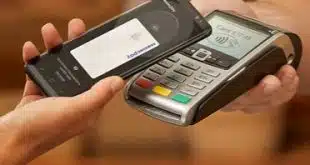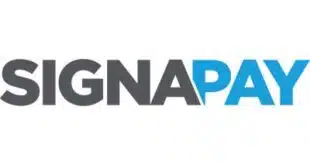Cloud connectivity, apps, and features beyond payments are shaping the next evolution of the point-of-sale terminal.
With all the discussion surrounding merchant adoption of point-of-sale systems and integrated payments, one might think the days of the conventional POS terminal are numbered. Their days as an isolated piece of equipment with a sole function as the entry point for payment transactions may be dwindling. But, that does not mean the venerable POS terminal is about to become an historical artifact, as long as it’s not in isolation.
“Any system today, whether it’s a point-of-sale or hardware device, that is not cloud-based is dying,” proclaims Jared Drieling, senior director of business intelligence at The Strawhecker Group, an Omaha, Neb.-based payments advisory firm.
Today, a conventional POS terminal may still sit on the countertop, but with increasing likelihood it’s connected to POS software. It still captures payment data, but now it may act as the citadel, protecting the integrity of the data and sharing only the minimum information necessary with the software. The POS terminal may have a PIN pad or signature-capture capability. It may enable consumers to enter loyalty-program information or redeem offers.
In instances where there is no conventional POS terminal, a merchant likely has a tablet-based POS system in place. Since 2010, when Apple Inc. debuted its iPad and POS software developers flocked to the form factor, tablet-based POS systems have steadily gained favor among merchants.
‘Very Limited’ Growth
At first, the tablet form factor, like the smart phone before it, was innovative and attracted businesses. Then, as cloud connectivity improved, the opportunity developed to bundle other services, such as employee scheduling, inventory management, pricing, and detailed sales reports, making cloud-based POS systems the preference for many businesses, especially small businesses that now could afford them and had a need for them.
That has had a dramatic effect on the market.
Even traditional POS systems, which typically had updates performed when the maker sent a technician to install new software or hardware, are losing ground against cloud-based systems, Drieling says. Some merchants avoided these updates because they might cost thousands of dollars.
“In legacy systems [POS system makers] developed the code and would try to customize it for you,” Drieling says. “Cloud-based POS systems can be integrated with new or existing systems. It allows the developer to integrate other software into that system without having to create software to bridge the two together.”
Such developments mean that the outlook for conventional POS terminals is quickly changing. “Conventional countertop devices are going to be around for a very long time, but the growth of that category is very, very limited,” says Thad Peterson, senior analyst at Boston-based Aite Group LLC.
That’s because a dedicated POS and payment device isn’t as useful or cost-effective as an integrated platform like, for example, Square, he says. Square Inc. introduced a magnetic-stripe-only card reader in 2009, but followed up with POS software for the iPad, and now, interestingly, offers its own Square Terminal for $399.
‘Reactionary Mode’
For sure, Square is one of many to launch so-called smart terminals, which use apps and enable easy integration to POS software. Square chief executive Jack Dorsey even heralded the new Square Terminal during a November earnings call as the replacement for “dinosaur” POS devices. The same month, payments provider North American Bancard Holdings LLC launched its own smart terminal, joining competitor Poynt Co., which debuted its device in 2014. (For more on Poynt, see p. 7.)
The common denominator in all these devices is the connectivity. That is a boon to small businesses, which had to forgo POS systems of the past because of the costs. “The most critical point to why these cloud-based systems are growing, primarily in the small and mid-size space, is they allow a lot of integration,” Drieling says.
This ability to integrate payments with software that can run other business functions is much sought-after in retail. In August, for example, payments provider Global Payments Inc. paid $700 million for AdvancedMD, developer of medical-office management software.
This all points to a very cloudy future. For the likes of Verifone Systems Inc., Ingenico Group, and Equinox Payments, which sprang from the former Hypercom Corp.’s U.S. unit, their roles as providers of traditional POS terminals will change, Peterson says.
“The challenge with the Ingenicos and Verifones of the world is they are in reactionary mode,” he says. “But they’re easily disrupted by players coming in with more flexible and lower-cost offerings.”
Going Up Market
It’s not for lack of effort on their part. San Jose, Calif.-based Verifone, which went private this fall, has been emphasizing services revenue for years and launched its Carbon line of smart terminals to better compete.
Paris-based Ingenico, too, has grown its services revenue and made changes. In April, it launched the Moby/C150 ECR that features an Android-based tablet with a 15.6-inch display.
As it adapts to changes among merchants and consumers, Ingenico finds itself examining the point of interaction between consumers and merchants. While Mark Bunney, Ingenico North America director of go-to-market strategy, says there will still be customers for standalone POS terminals, the market is changing.
“Lots of the tablet or mobile POS providers are definitely changing some of the dynamics in the marketplace,” says Bunney. “We have to change not only from a hardware perspective, but [in] how it’s going to impact our software and services.”
Bunney points to Apple’s own retail stores and Amazon.com Inc.’s Amazon Go locations as examples of this change. There is no POS station in an Apple store. It’s all mobile, Bunney says. And in Amazon Go stores, the consumer’s own smart phone with the Amazon app is the payment mechanism.
Of the three primary categories of POS-terminal technology—the standalone device, the integrated POS, and mobile POS—demand for standalone devices is declining, Bunney says.
“That’s part of the market migrating to an integrated solution or going to a more tablet solution,” he says. “The other thing we’re seeing in the integrated market is merchants as well as the consumer want to have additional interaction beyond just the payment with the merchant.”
That mirrors what Peterson sees in the market. “The customer experience used to be managed by the merchant,” Peterson says. “Now, the consumer controls their own experience.”
That control has been enabled by the versatile tablet. “Now, the POS could look like a tablet,” Bunney says. It depends on the type of interaction consumers want, he says. “People want sleeker-looking solutions,” he says. “They don’t always necessarily want to have a separate payment device from the tablet.”
That’s not to say that a tablet, or cloud-based POS system, is for every type of merchant. Bunney doesn’t think large merchants would be as satisfied with a tablet-centered POS as they would be with something designed for their complex needs.
Still, some cloud-based POS system providers have made moves to go up market. Square Terminal, with its integration capability, is one example, and First Data Corp. is promoting its Clover POS system for fine dining.
Postponing Extinction
How the POS experience will adapt is uncertain, with its dependence on how consumers shop and the technology they use and how merchants react to these changes.
However it evolves, there will be integration of the payment-acceptance device into the overall checkout experience.
“The standalone device where it’s not talking to the POS is in decline,” Bunney says. Yet he doubts it will disappear completely, despite Square’s claim the older tech is a “dinosaur.” “In some areas, it may not be growing at as fast a rate,” he says. “There is still that interest level.”
The hardware side may not change too much in the near future, Bunney says, with the exception of some devices, like tablets, gaining contactless-payment acceptance. Most POS terminals shipped since at least 2015 by the likes of Verifone, Ingenico, and Equinox have contactless tech built in, if not yet activated.
Better contactless identification marks may be part of future devices, Bunney suggests. “How do you make it easier for the consumer to interact from a hardware perspective?” he asks.
POS software, in all forms, will evolve much faster, he says. Not only will industry standards from EMVCo, which sets the specifications for EMV chip-card acceptance, influence this, so will PCI Security Standards Council standards on PIN-on-mobile, which enables commercially available devices to securely accept PINs.
PIN-on-mobile is one of the trends Peterson sees influencing the evolution of the POS experience. It’s devolving the POS into smart devices that are not POS devices, he says. More use of mobile devices, especially for in-aisle checkout, and increasing awareness and availability of alternative payment methods are two other trends.
The Ultimate Payment
The so-called traditional POS makers will have to evolve, says Drieling. “They need to come out with some competitive products,” he says. “They know the POS industry very well. They probably have the capability to bring out some competitive cloud-based POS products. I don’t see them doing very much in the independent software vendor space.”
ISVs increasingly look for a partner to handle the payments element, alleviating much of the issue surrounding payment-device certification with their software.
The future POS may not even resemble a POS device or tablet.
Even Amazon’s Alexa voice assistant almost qualifies as a POS device, Drieling says. Echo and other in-home devices enable consumers to use their voice to authorize orders. “The next step is unified commerce,” he says, allowing a consumer to start a transaction in one channel and go through others until making the ultimate payment.




